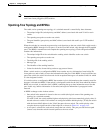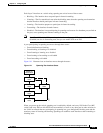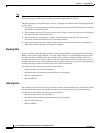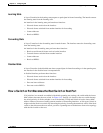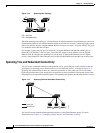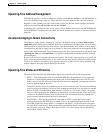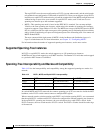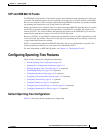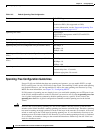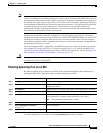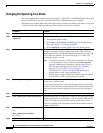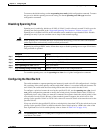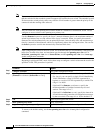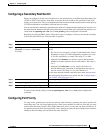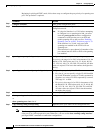
14-11
Cisco ME 3400 Ethernet Access Switch Software Configuration Guide
OL-9639-06
Chapter 14 Configuring STP
Configuring Spanning-Tree Features
STP and IEEE 802.1Q Trunks
The IEEE 802.1Q standard for VLAN trunks imposes some limitations on the spanning-tree strategy for
a network. The standard requires only one spanning-tree instance for all VLANs allowed on the trunks.
However, in a network of Cisco switches connected through IEEE 802.1Q trunks, the switches maintain
one spanning-tree instance for each VLAN allowed on the trunks.
When you connect a Cisco switch to a non-Cisco device through an IEEE 802.1Q trunk, the Cisco switch
uses PVST+ to provide spanning-tree interoperability. If rapid PVST+ is enabled, the switch uses it
instead of PVST+. The switch combines the spanning-tree instance of the IEEE 802.1Q VLAN of the
trunk with the spanning-tree instance of the non-Cisco 802.1Q switch.
However, all PVST+ or rapid-PVST+ information is maintained by Cisco switches separated by a cloud
of non-Cisco
802.1Q switches. The non-Cisco 802.1Q cloud separating the Cisco switches is treated as
a single trunk link between the switches.
PVST+ is automatically enabled on IEEE 802.1Q trunks, and no user configuration is required. The
external spanning-tree behavior on access ports is not affected by PVST+.
For more information on IEEE 802.1Q trunks, see Chapter 11, “Configuring VLANs.”
Configuring Spanning-Tree Features
These sections contain this configuration information:
• Default Spanning-Tree Configuration, page 14-11
• Spanning-Tree Configuration Guidelines, page 14-12
• Enabling Spanning Tree on an ENI, page 14-13 (required)
• Disabling Spanning Tree, page 14-15 (optional)
• Configuring the Root Switch, page 14-15 (optional)
• Configuring a Secondary Root Switch, page 14-17 (optional)
• Configuring Port Priority, page 14-17 (optional)
• Configuring Path Cost, page 14-19 (optional)
• Configuring the Switch Priority of a VLAN, page 14-20 (optional)
• Configuring Spanning-Tree Timers, page 14-21 (optional)
Default Spanning-Tree Configuration
Table 14-3 shows the default spanning-tree configuration.



